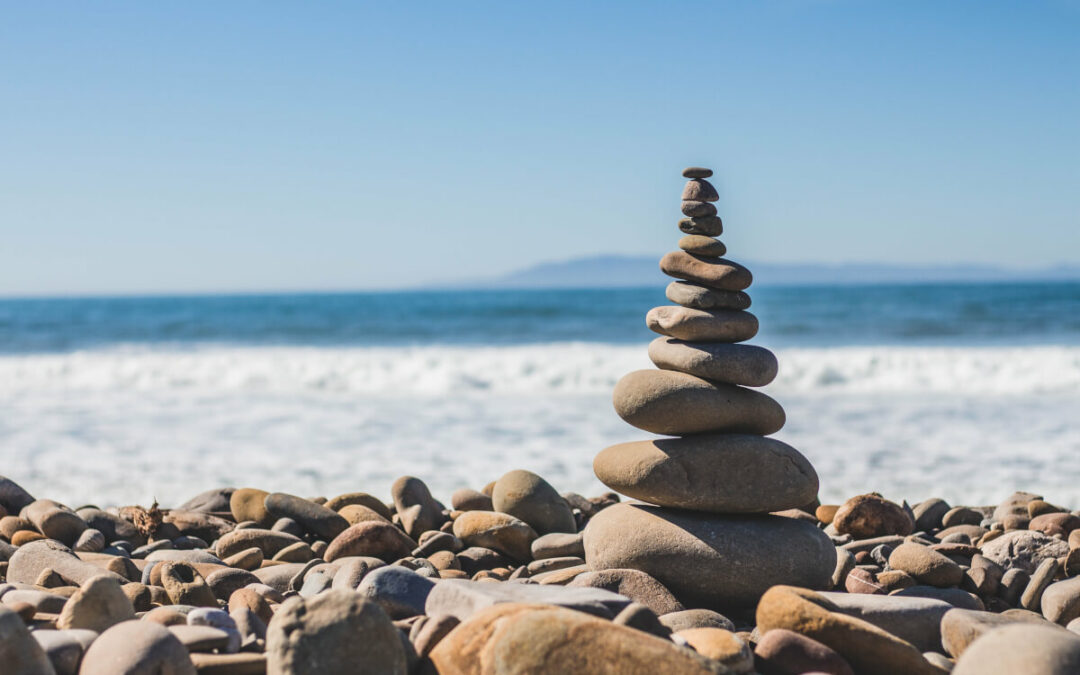We’ve all heard the expression to “live in the flow”. What does living in the flow mean to you? What does it feel like to live in the flow and what is required to get there?
To me, living in the flow means swimming along in rhythm with life’s ups and downs. We know that life has a rhythm because we have experienced its ebb and flow. We’ve had times when good things come our way and we feel like we are on a roll. When we finally get our dream job, or when we are in a relationship with someone we think could be “the one”; it’s an awesome feeling. Then, inevitably, something happens that puts an abrupt halt to our flow and it’s like a barrier has been placed before us. Suddenly, we are cut off from our blissful state of equanimity. The unwelcome intruder can come in the form of something small, like a flat tire on the way to work, or something big, like an unexpected layoff, or medical diagnosis. And just like that, our flow has shifted and we aren’t swimming with the dolphins anymore, we feel as though the dolphins are now sharks and our current environment has completely shifted.
Knowing that the ebb and flow of life is here to stay, how do we get to the point where we are living in the flow even in the tough times?
A good first step is recognizing that along with the good times, come the not so good times. Cultivating awareness is key to being able to roll with the punches when they show up. When we pay attention to how we are feeling on a daily basis, and notice when we start to feel uncomfortable, we start to identify what triggers our discomfort, what blocks us from feeling good, and what keeps us from getting what we need or want. We start the process of self-discovery by being curious about how we are feeling and reacting and what is getting in the way of our desired outcome. Self awareness gives us the presence of mind to anticipate when we are in that moment of disequilibrium and the power to recognize how best to handle the situation without undue reactivity.
This year, one of the intentions I set for myself was to feel less agitation when unwanted situations arise. I noticed that when I have an expectation about something and that something doesn’t work out the way I’d like, it sets me off. It’s not always a big deal, but I don’t want to react negatively. I don’t want to be the person who makes negative comments under my breath, or who gets irritated too easily by not getting my way. So, I’ve been practicing to rewire my reactiveness. Learning how to navigate with the least amount of resistance during those periods paves the way for living in the flow.
Living in the flow, essentially, is knowing that although the tough times will come, they will also go. And interestingly enough, when we don’t fight with what is, “what is” will go away much quicker. I realize that how I react to something is a choice that I make. I have the power to react in a way that is more peaceful, or in a way that carries on feelings of anger and resistance. This is not to say that changing one’s behavior and reactions can happen overnight, but having the desire to change, coupled with the tools to support the change makes the going much easier.
Below are some tools to support living in the flow. Note which ones resonate with you and see if you can start a new positive habit to encourage living in the flow.
Regular check-ins during the day or week- Ask yourself, “How am I feeling? What can be adjusted to give me what I need?”
Taking pauses during the day– Take 3 restorative long breaths, following the breath as it fills up your lungs and as you release it slowly through the nose. Or do the Box Breathing method which is releasing all the breath in your lungs through a deep exhale, then breathing in slowly through your nose for a count of four, holding for a count of four and then releasing the breath for the count of four and repeating that cycle three times.
Meditation daily and/or mindful action- A little goes a long way, so if you are not a regular meditator, even 5 minutes a dayof sitting with focused attention on your breath and your body, and releasing the mind, or focusing strictly on a particular task at hand will provide significant benefits.
Developing a compassionate mindset– Noticing when you are being judgmental with yourself and others and learning to be compassionate instead will make a significant difference in bringing flow and peace in your life. Asking yourself, “would I talk to my best friend that way? Turn your negative statement into a positive one and feel the difference it makes in your day.
Ask yourself what makes you feel restored and happy and make an effort to include that in your life. Sometimes not doing what we love is what keeps us from living in the flow.
We are all works in progress, bringing balance and flow into our lives is a choice. We can let life take its course, or we can show up for ourselves and do the things that will take us to our desired state. Looking inward with curiosity and asking ourselves questions help us cultivate the awareness needed to make the changes necessary to live in the flow.
How do your daily habits support or undermine living in the flow?
Is there something that is missing in your daily life?
Is there something that is blocking you from feeling in the flow? What adjustments need to be made?
What change(s) can you commit to?
Living in the flow isn’t about what happens to us, it is about how we choose to react to what happens to us. Getting there is a journey that starts with a desire and a single step. With the efforts come the rewards: self awareness, resiliency, equanimity, opportunity and peace, to name a few. How ready are you to take the first step? Who can support you along the way? I’ll be walking down that road. I hope to see you there.

